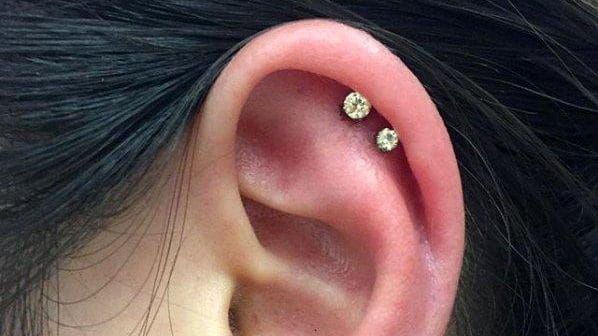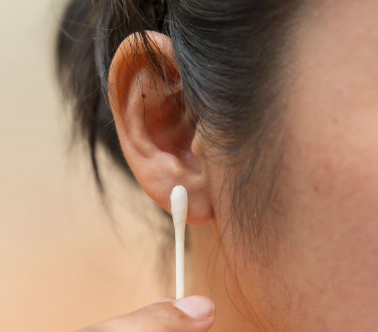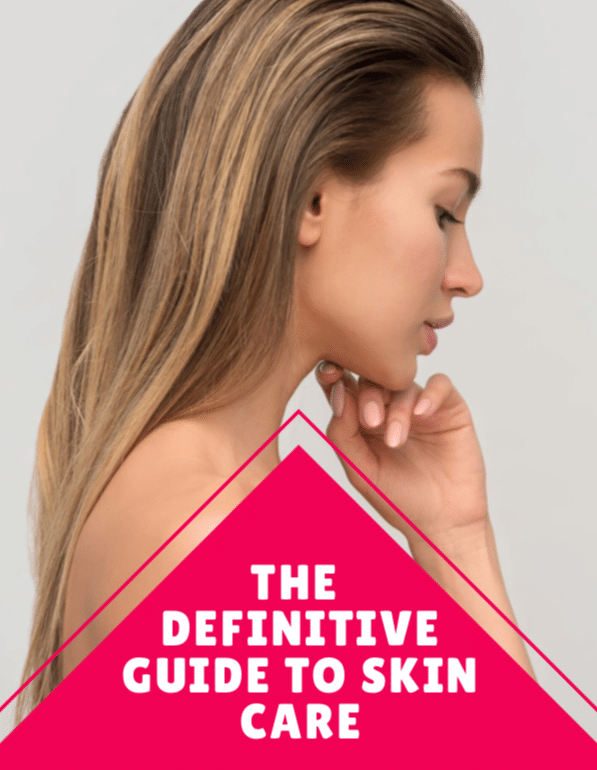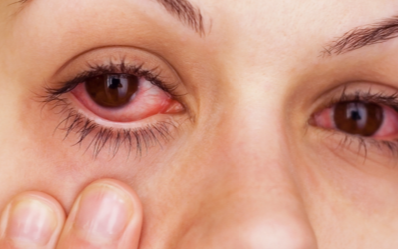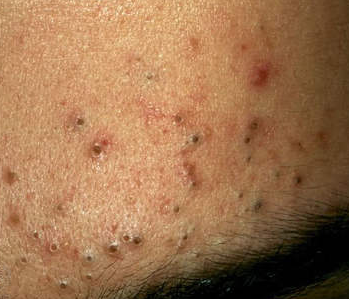Earlobe piercings are very common, but an increasingly good number of people are also showing great interest in cartilage piercings. The cartilage is the upper part of the ear and is one of those areas where piercings can be very dangerous and result to infections.
It is never easy to deal with a cartilage piercing bump as it is not that responsive to the common antibiotics. A cartilage piercing has higher chances of being infected – the infection rate for cartilage piercings is about 34%, whereas it is about 22% for other body piercing. Keep doctor’s advice close to find out how you can deal with a cartilage bump if it so happens.
Causes of Infected Cartilage Piercing
There are a several number of reasons why a person can be infected with a cartilage piercing, and some of them are as indicated below.
- 1. Unhygienic Procedures
This is the most common cause of infections of the ear cartilage piercing. A person may go to a piercer who makes use of unsterilized equipment like the gun and a needle. Getting the piercings done with the unsterilized equipment is a sure way of getting an infection as the bacteria can transfer from person to person.
- Wearing Inexpensive or Inappropriate Jewelry
This will also result to infections as well as development of cartilage piercing bump. Wearing of the jewelry in a material that you’re allergic to will result to infections. Nickel is more often the known cause for such allergies. You will be better off if you consider wearing jewelry that is made from gold, stainless steel, or even titanium.
- Not Maintaining Personal Hygiene
This could be as likely dangerous. You need to pay attention to keep your pierced area clean and dry while it is still healing. Also, ensure that your hair doesn’t touch your piercing because it can cause infections.
In addition, you may end up getting an infected cartilage piercing as a result of some physical injuries that result from the process of piercing, over cleaning of the cartilage piercing and the usage of a piercing gun. Regularly touching the jewelry may also lead to an infection.
Symptoms and Signs of Infected Cartilage Piercing
Infected cartilage piercing heals in three stages namely;
- The first stage is the known as the inflammatory stage where your wound is still open and inflammation may be experienced.
- The second stage is growth stage where the body produces collagen.
- The final stage is remodeling or the maturation stage in which disorganized collagen fibers repair and realign.
You may experience issues in any of the indicated healing stages, but you can always make use of the following remedies to help clear the infection.
- Seat Salt Soaks
Take a clean bowl and add about 8 ounces of warm water with 1 teaspoon of sea salt to it. Mix well and apply it directly on the infection – you can use a cotton ball for application to the infection. Leave it at the infected cartilage piercing for 10 minutes and then rinse it off completely. Doing it twice a day will help get rid of your cartilage piercing infection.
- Aspirin
Aspiring helps opens up the blood vessels and triggers healing. Simply crush a tablet and add it to a bowl. Pour some water in the bowl to make a paste. Apply it with a cotton ball directly on the affected area of the skin for relief.
- Chamomile Tea
To make the sea salt treatment even more effective, simply place a chamomile teabag in the container, boil it, and place it on the infected cartilage piercing. You can use it after application of the sea salt for better results.
- Lemon Juice
Lemon juice can work very well on the cartilage piercing bumps because it can clear bacterial infections. Just squeeze a few drops of lemon in a small bowl. Add some water to it and apply the mixture on the affected area with the help of a cotton ball. Repeat a couple of times during the day for relief.
- Tea Tree Oil
The antibacterial properties of tea tree oil make it a great solution for infected cartilage piercing. You need to dip a cotton ball in the oil and apply it directly on the affected skin area. Do it once a day for a week to observe better results.
Infected Cartilage Piercing Bump
Cartilage piercings on ears and noses are prone to getting bumps which are the small, raised scars around that appears at the exit holes of the piercing. Sometimes they are brought about by loose or incorrect jewelry, rough handling, or even by incorrect piercing by a piercing gun.
Often it is just said to be a bad luck. Although these bumps are not dangerous, they can sometimes feel unpleasant and itchy. If you want to be free from an infected cartilage piercing bump, you will have to experience patience as they can take a while to go away.
However, if you are consistent, they should go away within two to three months, and the piercing will be good as new.
Infected Cartilage Piercing Pain
Cartilage piercing is a common and one of the most known forms of body piercing. Cartilage is a hard elastic tissue that is found in different areas of the body like the nose, outer ear, etc. Ear piercing is however a primitive form of body piercing, but it is safe and risk free. On the other hand, cartilage piercing is not very safe and can thus be very harmful.
Some types of cartilage piercings include helix piercing, daith piercing, rook piercing and tragus piercing etc. Signs and symptoms of any infected cartilage piercing includes pain, pus in the bumps, fever, inflammation and irritation.
Ibuprofen can however be consumed to reduce pain.
How Do You Clean Infected Cartilage Piercing
The way of getting your cartilage of the ear and even the nose pierced for the reasons that are aimed towards becoming stylish with a variety of accessories that are hanging on the nose or the ear has also been the common reason for going to the doctor owing to the bad effects of such ornamental uses.
Most people especially the young have always liked to flaunt the trendy accessories and earrings in order to look cool. But once they feel the effects and the pain that usually follows the piercing, they realize the importance of the not experiencing ear piercing.
It has been observed that poor and unhygienic methods of piercing leads to swelling and infection of the ears or the nose and leading pain in the most affected areas. Extreme conditions may also result to cartilage piercing infections causing the development of abscess that may at times contain puss.
- Do not touch the piercing unless you are cleaning it. Unwashed hands have bacteria and the piercing is a point where the bacteria can penetrate below the skin and lead to an infection.
- While healing, the piercing may need to be cleaned once daily. Cleaning more often than this will harm the piercing.
- You will need to use an antibacterial soap that contains either chloroxylenol or triclosan
How to Treat Infected Cartilage Piercing
- Use a chamomile salt soak. The addition of chamomile tea to the salt soak assists in soothing and calm the skin around the piercing making it a good option for people with a sensitive skin. To prepare:
- Dissolve 1 teaspoon of salt in boiling water, as described above. Add a chamomile tea bag to the water and allow to brew for five minutes.
- Once the tea appears brewed, dip a small cotton pad in the solution and press it against the bump for five minutes. Do this twice a day.
- Alternatively, some people brew the chamomile teabag in hot water, then remove the teabag immediately and allow it to cool slightly before pressing it directly to the ear.
- Make sure that you are using pure chamomile tea that has no added flavorings, and avoid the method if you have a ragweed allergy.
- Make a compress using breathable tape. Using breathable tape to press down on the developed bump is a perfect example of compression therapy. This method should only be used on fully healed piercings, as it could irritate those that are still healing. To use:
-
- Buy some breathable medical tape (such as Micropore) at your local drugstore. Try to find a color that matches your skin tone.
- Use a clean scissors to cut a small strip of the tape. It should cover the entire bump and about up to 2 mm of skin on all sides.
- Tightly cover the bump with the strip of tape, so the bump feels compressed. Wear the tape continuously all the day, replacing it with fresh tape when it begins to look grubby.
- Use the method for about two to three months. Hopefully, the bump will have disappeared after this time. If not, switch to a different method.
- See a professional piercer. If you would like a second opinion on the bump, see a reputable local piercing artist. They will be able to examine the bump and give you further advice on treatment options.
- As bumps are often caused by wearing loose or overly large jewelry; the piercing professional will also be able to pick out a better ring or stud for the piercing.
- The bumps may also be caused by jewelry made from the wrong materials. Ideally, jewelry for cartilage piercings should be made from titanium or a biocompatible plastic.
- If you however prefer, you could also see a doctor or a dermatologist, but it’s crucial to keep in mind that they do not have as much experience in dealing with piercings as professional piercers do.
- Use tea tree oil. Some people have claimed to have had success in the healing of piercing bumps with tea tree oil, which is a common ingredient in most of the home remedies due to its antibacterial properties.
-
- Make sure to buy 100% pure tea tree oil, as this is the least likely to lead to irritation.
- If the skin is not very sensitive, just use a drop or two of the tea tree oil onto a cotton swab and apply directly to the bump. Repeat this twice a day until the bump seems to disappear.
- If you do have sensitive skin, it’s a perfect idea to dilute the tea tree oil that is very strong using a drop or two of water before applying it to the ear.
Cartilage Piercing Care
- Make sure that the jewelry fits properly. Loose jewelry can sometimes move around inside the piercing thus disturbing the cartilage and leading to an infected cartilage piercing bump.
- Thus it is crucial to get jewelry that fits the piercing perfectly. A professional piercer from a reputable salon can assist you with this.
- You should also avoid the wearing of earrings that has butterfly backs, as these are more prone to leading to bumps.
- Never get pierced with a piercing gun. Piercing guns should not be used for cartilage piercings. But some cheaper or less-professional piercing salons still use the guns.
- Piercing guns usually jam the jewelry through the skin, which leads to distortion of the ear cartilage underneath and often leads to bumps to form.
- Thus as you plan on getting a new piercing, avoid getting the piercing done at a place that still makes use of piercing guns as a way of avoiding cases of infected cartilage piercing.
- Avoid bumping or knocking of the piercing. Frequently bumping things off the piercing or getting it caught in hair or clothes makes the jewelry to move around the cartilage and can cause bumps.
- Tie long hair back as much as possible (especially when you are sleeping) to prevent it from pulling in the jewelry.
- And in general, just try to be more aware of the piercing and do your best to protect it. Don’t always fiddle with it or touch the piercing constantly.
Risks of body piercing
- A build-up of pus may at times form around the piercing place. If it is left untreated then it may require to be surgically drained by a doctor and can lead to a scar. In some cases, it may develop into blood poisoning or even toxic shock syndrome that can be more serious. Blood poisoning can also occur without an abscess.
- Tongue piercings carry a smaller risk of bacterial infection, despite the high number of bacteria that are found inside the mouth. It would be wise to brush the teeth or cleanse the mouth just before getting a tongue piercing. The vein that is found under the front of the tongue can also bleed profusely if the piercing is very close to it.
- Earlobe piercings are generally safer, but care must still be taken to keep the piercing clean and dry.
- You can reduce the risks of developing an infection by keeping the piercing drier. Before touching any piercing, make sure that you wash hands using soap and water, and dry them using a towel. But, try to avoid touching it if possible as there is no need to turn it.
- Due to registered piercing premises that uses disposable sterile needles and other equipment, the risk of passing on viruses such as hepatitis or even HIV is now almost non-existent.
- But, if you’re in a place where hygiene standards are poorer, then the risk of infection from hepatitis B, hepatitis C or even HIV, which can be caught from dirty needles are higher.

